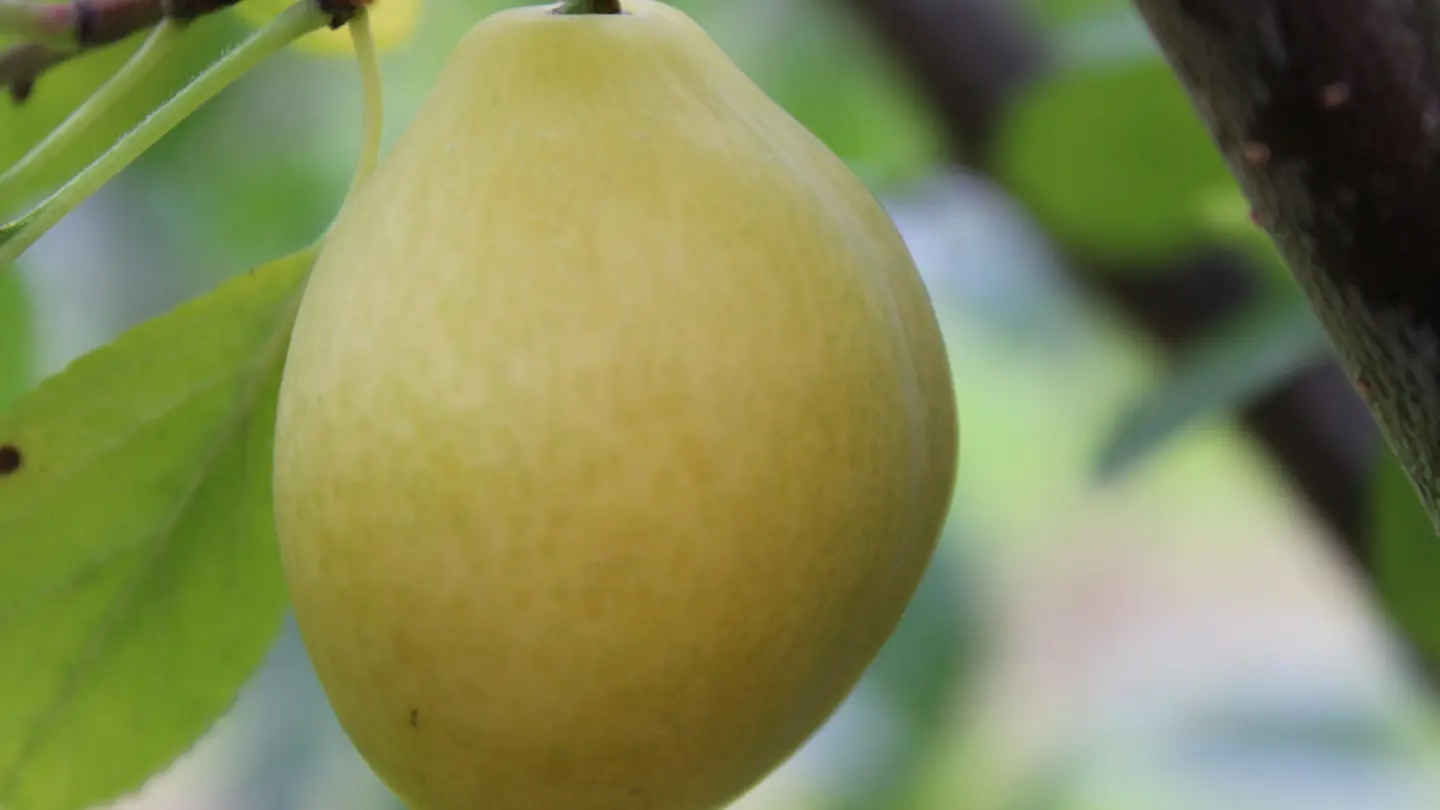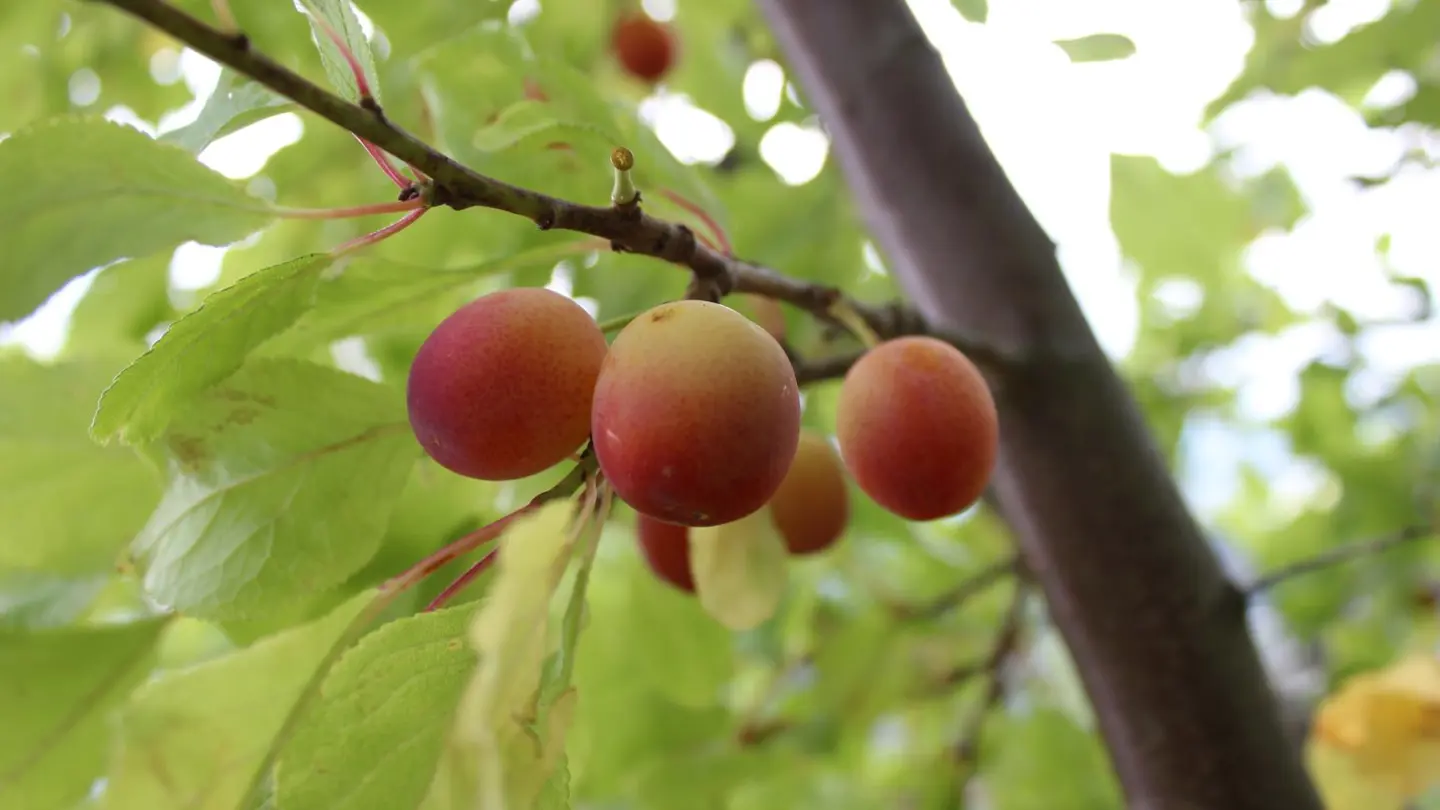
Traditional plums in semi-wild stands
- Hem
- Projekt
- Vilda kulturväxtsläktingar
- Växtporträtt
- Traditional plums in semi-wild stands
Plums are among the most variable and beautiful fruits (Hedrick, 1911), and several different botanical classification and ways of grouping the fruit based on the fruit appearance and taste have been applied. Additionally, local names are not always in accordance with international standard nomenclature, so this presentation is a small glance into the subject.
Text and photos by Stein Harald Hjeltnes.
Plums in Scandinavia are introduced via Southern Europe and originate from Minor Asia, where Syria and Damascus are important channels of introduction. The botanical names Prunus domestica ssp. syriaca, mirabelles, and P. domestica ssp. insititia, damsons, are both species that are known all over Europe in different forms. The latter has many group names, as bullaces, krieche, kroosjes and perdrigons. The relatedness of these plum types throughout Europe have not been comprehensively studied, however one would expect them to be quite closely related. No records exist on when these plum types were introduced to Europe and Scandinavia, but most of them have probably been introduced in the early Medieval period.
Traditional plums are most often present in dense stands in hedges and outer parts of the farms, where fruits have been harvested, and the trees left free growing. The renewal of trees was mainly carried out by nature itself, and a form of natural selection worked throughout the centuries – both vegetatively by root suckers and generatively by stones. Especially P. domestica ssp. insititia has been frequently utilized as rootstocks for modern plum varieties, as they easily root, stones germinate easily, and show no graft incompatibility. The most frequent utilized rootstocks historically in Norway has been ‘Gul sukkerplomme’ (Yellow sugar plum), ‘Alminnelig gulplomme’ (Traditional yellow plum) and ‘Vinterplomme’ syn ‘Omboplomme’ (winter plum), but also blue and red types (Husabø, 1970), all belonging to P. domestica ssp. insititia.
Yellow plum types
There exist a lot of different yellow plum types of the damascene type, some are early and sweet, while others are late and bitter and need frost to be eatable. SSR-analyses have shown that the yellow types are occurring in groups, some very closely related, and others more distant (Sehic et al, 2015). This indicates that there have been some original forms that has been introduced, and that there has been a natural segregation and adaptation to local climates. The late and bitter yellow types have locally been called “damask” while the early and sweet has been called “sukkerplommer” (sugar plums). Of the early sweet types, two different types occur – one roundish and the other more oblong with a neck. The latter is frequently called ‘’Alminnelig gulplomme”, a type known in Sweden, too.

Blue plum types
The blue types of plums studied in Norway are as numerous as the yellow ones, and especially one specific selection ‘Blåplomme fra Lier’, was sold at markets in quite large quantities during the late 19th and early 20th century. Many of the blue plums we find in Norway are similar to this type. The blue types are the ones that are called damsons and bullaces in England. The true damsons have a very pleasant taste that make them highly valuable for cooking and conservation, however the peel is very bitter in some of the types. This bitterness will disappear after cooking or frost (Hedrick, 1911). SSR-analyses of the blue types occurring in Norway show that they are less variable than the yellow types. Anyway, we see variation in the amount of skin bloom, fruit size and time of maturation. These types are found from Eastern Norway to the inland and along the coast up to Northern parts of Trøndelag.
Red plum types
The studies that we have carried out so far, indicate that the variation in red types is far less than in yellow and blue. ‘Eikerplomme’ is a traditional plum cultivar that has been cultivated extensively in Eastern Norway, both in the household making jams and jellies and for making of alcoholic beverages. It seems as the other red types occurring at least in Norway, are of the same type. The name “Eiker-krike” has been frequently used on this plum, indicating it is a damascene. Plums of this type was brought to the market up to the 1950’s.

References
Hedrick, U.P. 1911. The plums of New York. J.B.Lyon Company, State Printers, Albany. 616 pp
Husabø, P. 1970. Variety and rootstock trial in plums. State Experimental Station Njøs Report no 21: 32 pp
Sehic, J.; H. Nybom; S.H.Hjeltnes & F. Gasi. 2015. Genetic diversity and structure of Nordic plum germplasm preserved ex situ and on-farm. Scientia Horticulturae 190: 195-202


